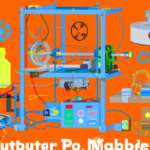
Introduction
Metal 3D printing has revolutionized how things are made, and it has drawn the attention of manufacturers, engineers, and other experts in the industry. From small-scale figurines to large airplane parts, metal 3D printing has found its way into many industries, making it an indispensable tool for designers and engineers. In this article, we will discover the beauty of metal 3D printing and how it’s used to make designs come to life. Keep reading to find out more!
What is 3D printing?
To understand metal 3D printing, we must first understand 3D printing itself. 3D printing is a method of manufacturing that creates a three-dimensional object by adding layers of material, such as plastic or metal, on top of each other. Traditional manufacturing methods, such as casting or machining, can be expensive and time-consuming. However, 3D printing streamlines the process and can be more cost-effective. Metal 3D printing refers specifically to the process of using metal powders to create 3D printed objects. This process involves melting the metal powder together under high temperatures to create a solid object. The result is a strong and durable object that can withstand high heat and pressure, making it ideal for many industries.
The benefits of metal 3D printing
Metal 3D printing has revolutionized manufacturing by offering several benefits. One major advantage of metal 3D printing is the ability to create intricate designs that may not be possible using traditional manufacturing methods. The process also cuts down on the time it takes to create prototypes, which can save manufacturers both time and money. Additionally, metal 3D printing can create stronger and more durable products that can withstand high heat and pressure, making them ideal in industries such as aerospace, automotive, and healthcare. This technology also reduces waste as only the required amount of metal powder is used, resulting in less waste material. Overall, metal 3D printing has changed the way products are designed and manufactured, opening up new possibilities for the future.
How metal 3D printing works
The process of metal 3D printing involves several steps. First, a 3D model of the object is created using design software. Afterward, the design is transferred to the metal 3D printer where the object is printed layer by layer using metal powder. A high-powered laser is then used to melt the metal powder and fuse it together, creating a strong and durable object. Once the printing is complete, the object is removed from the printer, and any excess metal powder is cleaned out. The object then undergoes further processing, such as sandblasting or polishing, to achieve the desired finish. Overall, the metal 3D printing process is a complex but powerful manufacturing technique that is changing the landscape of many industries.
The future of metal 3D printing
The future of metal 3D printing is promising, with ongoing research and development in this field. As technology advances and becomes more accessible, it is expected that metal 3D printing will become the preferred method of production for many industrial applications. One area where metal 3D printing has the potential to make a significant impact is in the healthcare industry. With this technology, medical implants can be custom-designed to fit a patient’s specific anatomy, resulting in better outcomes and overall patient satisfaction. Another area of growth is the aerospace industry, where metal 3D printing can produce lighter and stronger components for airplanes and satellites. It’s clear that metal 3D printing is revolutionizing the manufacturing industry and will continue to do so in the future.






